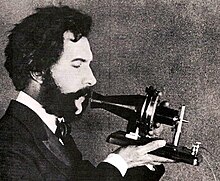
Alexander Graham Bell invention of the telephone is the culmination of work done by many individuals, the history of which involves a collection of claims and counterclaims. The development of the modern electrical telephone involved an array of lawsuits founded upon the patent claims of several individuals and numerous companies.
This article covers the early years from 1844 to 1898, from conception of the idea of an electric voice-transmission device, to failed attempts to use "make-and-break" current, to successful experiments with electromagnetic telephones by Antonio Meucci, Alexander Graham Bell and Thomas Watson, and finally to commercially successful telephones in the late 19th century.
Telephone
